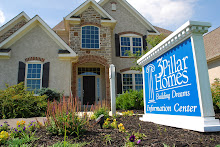If there is one idea shared by all American's it is to lower, and ultimately eliminate, our Nation's dependence on foreign oil. It seems clear that there is no single solution that will provide an all encompassing solution to our energy situation. Along with cultivating new sources of energy and continuing to utilize our existing oil, gas and coal reserves, energy conservation plays an important part toward achieving energy independence.
Today's professional home builders are aware of the difference they can make in our Country's energy future. Green Building has arrived and it's here to stay.
There's little doubt that today's new homes are much more energy efficient than those of even a decade ago, and certainly compared to homes built before the "energy crisis" of the mid-1970s. Incredible improvements in the performance of windows and doors, major appliances, and heating and cooling systems have significantly lowered the energy consumption of new homes, helping lower utility bills and raise the quality of housing overall.
Builders do not work in isolation. Government agencies and their building codes have contributed to pushing energy efficient homebuilding into the mainstream. Builders must comply with basic levels of home energy consumption prescribed by governmental code, from minimum window performance standards to adequate levels of wall and attic insulation and proper fresh-air ventilation. Codes also set guidelines for reducing moisture and air infiltration into the structure, which not only saves energy but also reduces incidences of mold growth and other moisture-related problems.
In addition to more stringent and specific codes regarding energy-efficient homebuilding, there are an increasing variety of independent, public-private, and federally funded programs that promote the concept and even certify products and entire homes that meet energy-use standards. The most recognized among these entities is Energy Star, a government-sponsored program that certifies the energy use and cost savings of several thousand products from nearly 1,300 manufacturers, as well as builders and the homes they build.
In response to both codes and independent energy standards, manufacturers of various building products have not only met the code and other independent standards, but also developed materials and methods that allow builders to exceed the minimum and achieve a higher level of energy efficiency for new homes. Such upgrades or options include super-insulating, multi-pane windows, extremely efficient furnaces, air-conditioning equipment, and electronic programmable thermostats.
Builders who have taken the mantle of energy efficiency as a cornerstone of their businesses understand the added value of building homes that use less energy and cost less to operate. Their considerations extend beyond specific products. Energy efficiency is best achieved by looking at the entire system, including design issues and construction procedures, to achieve the goal of a more energy-efficient, comfortable, and long-lasting home.
For example, consider your heating and cooling system. A builder who specifies and installs a higher level of insulation in the walls, floor, and ceiling, seals openings in the structure (including around doors and windows), and uses products and design techniques that provide natural shading, enable cross-ventilation, and reduce thermal transfer through your home will be able to reduce the size of the furnace and air conditioning unit required to keep your home comfortable year-round. This system approach will often lower the cost to install and maintain the equipment. Chances are it will last longer and reduce repair and replacement costs as well.
Working together, homebuilders, code agencies, independent certification groups, and product manufacturers continue to improve the energy efficiency of today's new homes. As a result, their efforts not only reduce energy use and costs, but also help stabilize our national economy, create longer-lasting homes, and boost overall housing value.
skip to main |
skip to sidebar
We are a new home builder offering custom home plans to meet your lifestyle and budget. Whether you are in the market for a new, semi custom or custom home, we can help you achieve your dream.
3 Pillar Homes
5710 Delano Ave
Lewis Center, OH 43035
(740) 548-8599




